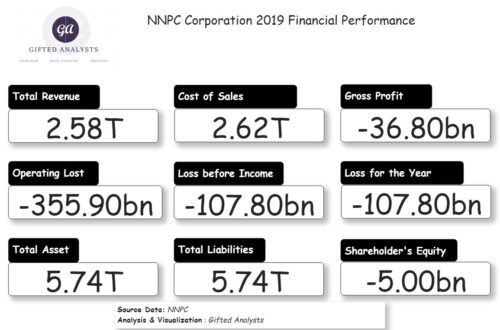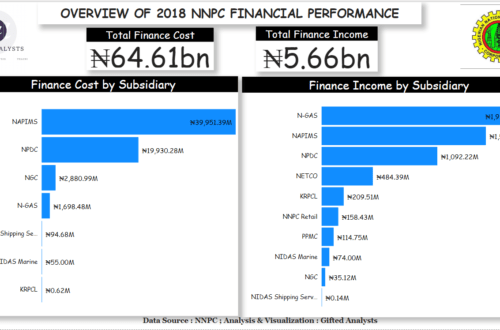
How to Analyze the Financial Statement of Banks
Like any other company, financial institutions prepare financial statements for regulatory purposes and to assist their users in making economic decisions. However, banks’ business models are different from other companies. Thus, they attract a unique regulatory focus.
How Banks are Different from Traditional Companies
The economics of non-banks usually involves the transformation of raw materials into some form of intermediate or finished products. Think of Dangote plc that produces Cement; it transforms coal and limestone into Cement. This same raw material analogy can be applied to banks but differently. Banks’ raw materials are majorly borrowings – deposits and other borrowings like bonds, meaning they transform short-term debts into long-term assets in the form of loans (a concept known as maturity transformation).
An industry with debts as its raw material will have a very high financial risk which can lead to bankruptcy. Overleverage has been identified as a significant factor that led to the 2008 financial crisis in the US, which reverberated globally. Because of this inherent risk, regulation plays a unique role in the banking industry.
Because of the critical role banks play as a medium of financial intermediaries and transmission of the apex bank’s monetary policies, the Basel community in Switzerland, which is the leading global regulatory body in conjunction with individual countries regulator(s), ensure that the inherent financial risks in the banking system are mitigated. They do this by establishing some capital management ratios that banks are expected to adhere to. In Nigeria, the CBN is the leading regulator.
Regulatory bodies set the following ratios to gauge the capital management of a bank:
Risk-weighted assets: This is the minimum amount of capital a bank must hold to cover for losses arising from its total risky assets like loans and investment securities. It comprises three significant risks: market, operating, and credit risks. It is arrived at by dividing the tier 1 and tier 2 capital by the capital adequacy ratio.
Tier 1 capital: This measures the bank’s core strength from the regulator’s perspective. It includes only the primary shareholders’ equity and disclosed reserves. It is the most reliable capital base drawn upon in case of unexpected loss.
Tier 2 capital: This is the second layer of capital a bank must maintain to absorb losses. It majorly includes revaluation reserve, general provision and loan loss reserve hybrid capital instruments, and subordinated term debts. In Nigeria, the total tier 2 capital is limited to a maximum of the total tier 1 capital.
Capital adequacy ratio: This is the addition of tier1 and tier 2 capital divided by the total risk-weighted assets. The central bank requires all banks to maintain a capital adequacy ratio of 10% for domestic banks and 15% for regional/national banks with international banking licenses. Also, it requires an additional 1% as a systematic risk buffer for regional/national banks with international banking licenses.
Liquidity and stability ratios: After the 2008 financial crisis, it became evident that even large banks could suffer liquidity problems while maintaining adequate capital buffers against risk. Hence, the Basel community introduced the Net Stable Funding ratio and Liquidity Coverage ratio to promote short-term resilience of banks’ liquidity risk profile in the Basel III framework. The liquidity ratio is derived by dividing the bank’s stock of high-quality assets by its estimated net cash outflow over 30 days. Simultaneously, the Net Stable Funding ratio is the ratio between the stable funding available and stable funding required. Basel III requires that it should be equal to 100%.
The income statement is divided into three central parts: interest income, provision for loan loss, and other incomes and expenses. The interest income is the primary income source for a credit-giving bank. It depends on the agreed fixed or variable interest rates on loans and the bank’s advances to the customer. These rates are influenced by the monetary authority’s policy rate and the banking industry’s competitive dynamics. Other sources of interest income are income from investments securities like bonds, derivatives, etc.
The second most important item in a bank’s financial statements is the interest expense. The interest expenses depend on their respective volumes: deposits from customers and borrowings. The cumulative costs of these items are known as the cost of funds. The interest income less interest expense is known as the net interest income.
In assessing a bank’s earning power, the net interest income margin on its own has no vital meaning without factoring in the risks involved in generating it. The provision for loan loss computed per IFRS measures the risk that a bank has taken to create its net income margin. A significantly higher provision for a bank’s loan loss charge relative to its peers could mean the bank is taking excessive risk in generating its income. Otherwise, it could also mean the bank is highly conservative. In any case, because of the banking system’s pronity to crashes, the loan loss provision is a critical item to consider in your analysis.
Similarly, since banks engage in maturity transformation, they are exposed to the adverse impact of maturity mismatch and interest rate repricing risk. An interest rate repricing risk occurs when there is a mismatch in a bank’s assets and liabilities’ maturity. A credit-giving bank is exposed to an upward or downward movement in the interest rate. Think of it this way: a bank enters into a financial contract with its clients to provide a loan at an interest rate of 7%, while the bank sources funds from customers at a deposit rate of 4%. Suppose the loan matures in 2 years, and the prevailing interest rate at the maturity date is 3%; the bank thus faces an interest rate repricing risk as it would be investing at a lower interest rate (7%-3%). Interest rate repricing risk could also happen when the yield curve becomes inverted, i.e., when long-term rates are lower than short-term rates.
Other sources of income for a bank are fees and commission, which come from several sources depending on the bank’s business model. These incomes’ primary sources are account management fees, asset management fees, and investment banking fees.
The trading income is the last primary source of income of a bank. Banks derive this income from trading financial instruments like equities and derivatives. It is the most volatile income source of a bank.
Elsewhere, operating expenses of a bank, including depreciation, salaries, and tax expenses, are similar to non-bank operating costs and are in most cases analysed similarly with that of non-bank operational costs.
Main Ratios for Assessing a Bank
The capital management ratios identified earlier, and traditional ratios like return on equity (ROE), gross revenue margin and return on assets are the most used ratios in analysing a bank’s financial health. Other ratios used are:
Deposit run-off ratio: This is ratio shows a bank’s risk and stability. Imagine what would happen if all depositors of a bank request for their money when, in fact, the bank has locked-in their funds in long-term loans with its other customers – as it would typically do. In that case, the bank would not be able to finance its borrowings. The deposit run-off rate is calculated as the percentage of short-term assets to short-term liabilities.
Loan to deposit ratio: It shows the relationship between the loans to customers and customers’ deposits. Ideally, the total loans will grow or shrink, depending on a bank’s ability to attract customers’ deposits. However, the central bank can influence this ratio to achieve its monetary policy target.
Provision cover ratio: A bank is required to provide for possible loss from customers’ inability to repay loans it grants them. To gauge the loan loss provision’s adequacy, the total loans are compared with the average expected credit loss.
Default ratio: The bank’s average asset is compared against its default rate to determine how much the bank loses yearly. This can be compared with the loan impairment to determine if a bank provides enough for possible loan losses.
Efficiency ratio: This is one of the most popular ratios employed in analysing a bank. It is also referred to as the cost-to-income ratio. Banks would generally provide their cost to income ratio target in their annual reports. It is calculated as the operating expenses divided by the bank’s total income before impairment charges. However, it is essential to provide a caveat to this metric because of the relationship between a bank’s equity and interest income. Before determining that a bank is efficient, you have to identify the relationship between operating expenses and the interest income as a bank can release equity to generate loan assets without necessarily impacting operating costs.
In all, in analysing a bank, the (1) competitive edge of the bank, (2) competitive dynamics of the banking industry, (3) risk incurred in raising assets, and (4) macroeconomic policies of the fiscal and monetary authorities are essential insights to factor in.





One Comment
Funbi
Nice one